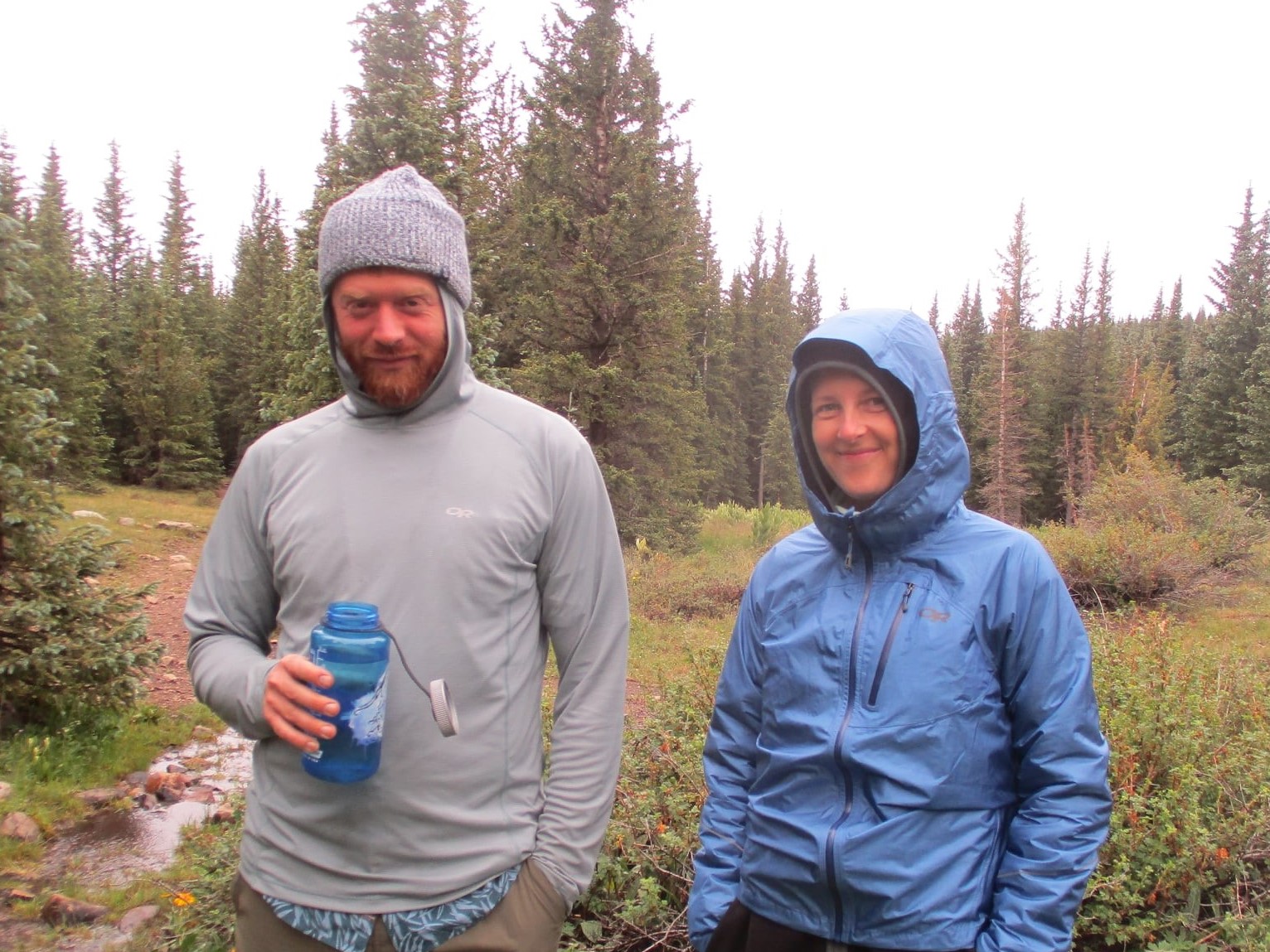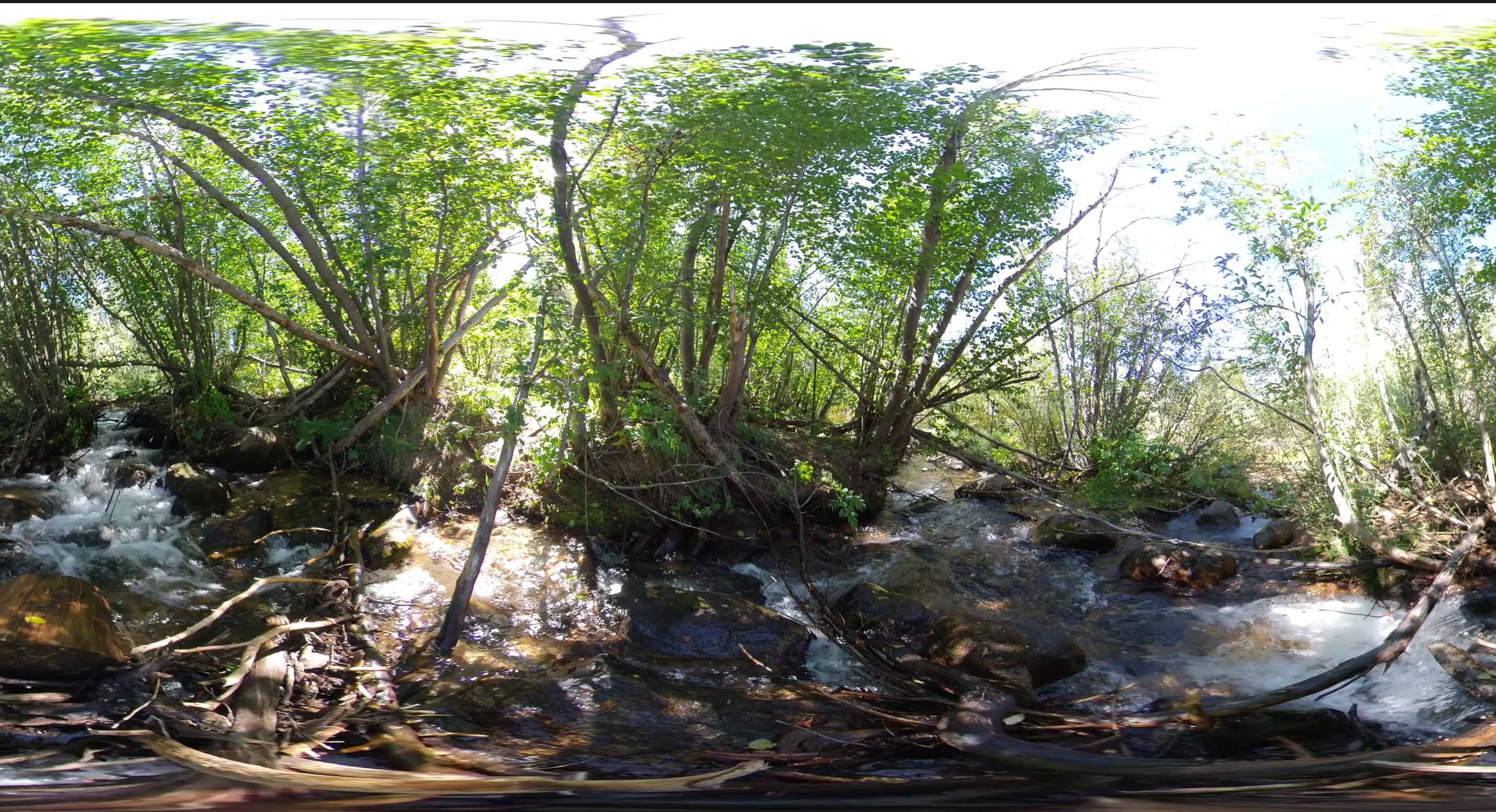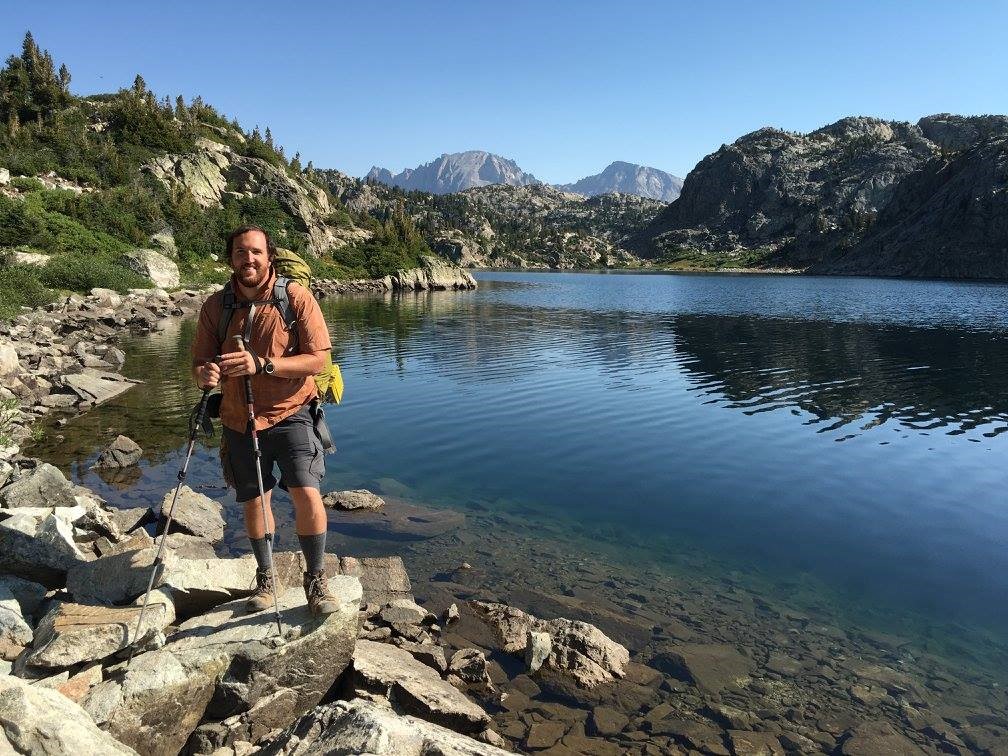Experiencing Nature Virtually Anywhere

Dr. Adam Hanley with his partner Julia Kronholz in the Pecos Wilderness, New Mexico.
Many days see Adam Hanley, assistant professor in the College of Social Work, out biking on the trails near his home. He tends to go in the middle of the day; it’s hot, but no one else is out. He loves this time of day in part due to the unparalleled view—everything vibrant and clear, brown waves of long grass moving in the breeze, a far reaching view of both the city and the Wasatch Range. “That view puts things in perspective—it changes my outlook on my relationship to the world and to the planet. I think slowing down to feel all the sensory connection is important—the warmth of the sun, the breeze against my skin, the smell of the grasses and the dirt. There’s a level of connection and solidarity in the moment when you slow down and really feel the earth and the natural world around you.” For Dr. Hanley, these experiences are a big part of why he does the research that he does. “That’s what we’re trying to give people a taste of with the virtual experience, it’s maybe not that full sensory moment, but the potential for it.”
Wait—virtual experience?
Dr. Hanley and Anthony Deringer, an assistant professor of Recreation Administration at Texas State University, have completed several studies on the intersection of technology and nature connectedness. In the latest study, participants were divided into three groups. The first two groups were recruited at a trailhead and randomly assigned to either don special goggles and have a virtual experience of the trail, or to actually hike the trail. In an effort to find a population of people with similar outdoor recreational interests, the third group was recruited from outside a local (to Colorado) outdoor store. With all three groups, researchers took a measure of the person’s nature connectedness and then asked if they would sign a petition to a local political representative in support of protecting threatened lands.

A wrap around image taken from the VR video of a nature setting with trees and a creek.
The number of participants in the study was small, so no major conclusions can be drawn, but there is enough data to support some broad conclusions. Compared to the participants at the store, both the folks who hiked the trail and virtually viewed the trail were more likely to sign the petition. For Dr. Deringer, these results ring true. “More than a century ago, John Muir said that if you wanted people to care about nature, you needed them to spend time in nature. It’s exciting to use new and innovative instruments to validate theory that has been a part of my field for a long time.”
In previous studies, Drs. Hanley and Deringer found that just expressing the desire to engage in ecological or conservation behavior doesn’t actually predict behavioral follow-through—behavioral follow-through was dependent on connectedness, feeling part of nature. “This result lends support to the idea that if we can just expose people to the outdoors—whether actual or virtual—maybe we can motivate conservation behavior,” said Dr. Hanley. “If we want to motivate people in these pretty dire environmental times, we have to get people connected. That, hopefully, will save the planet, and by extension, save us as well.”

Dr. Anthony Deringer
There’s an important question to consider in the middle of this: if the researchers are trying to get people into nature, why are they using a virtual tool? The answer is linguistically simple, but fairly complicated in terms of life experience: not everyone has the same access to nature. Due to socioeconomic status, local environment, and a variety of other factors often outside of a person’s control, some people simply do not have the ability to access nature. And if folks don’t have easy access to nature, they might not go out of their way to seek out moments of actual nature exposure.
“What’s really motivating these projects is land preservation efforts,” said Dr. Hanley. The pair are currently pulling together a grant to use virtual exposure to protect areas that are in danger of losing their protected status, hopefully as a public awareness campaign to generate more support for protection. Dr. Hanley continued, “The health of people is dependent on the health of the planet, and the health of the planet is dependent on the health of people. There’s a real circular relationship there.” Dr. Deringer echoed this idea. “Nature connectedness brings a lot of individual benefits, in terms of both mental and physical health. But also from an environmental perspective, connecting with nature makes us more likely to act in a positive way ecologically—what we’re willing to donate to, what we vote for, how we consume. Nature connectedness can impact how we live our everyday lives. If we can use recreational pursuits to have a positive impact on the environment for people, that’s worth knowing about and doing.”
